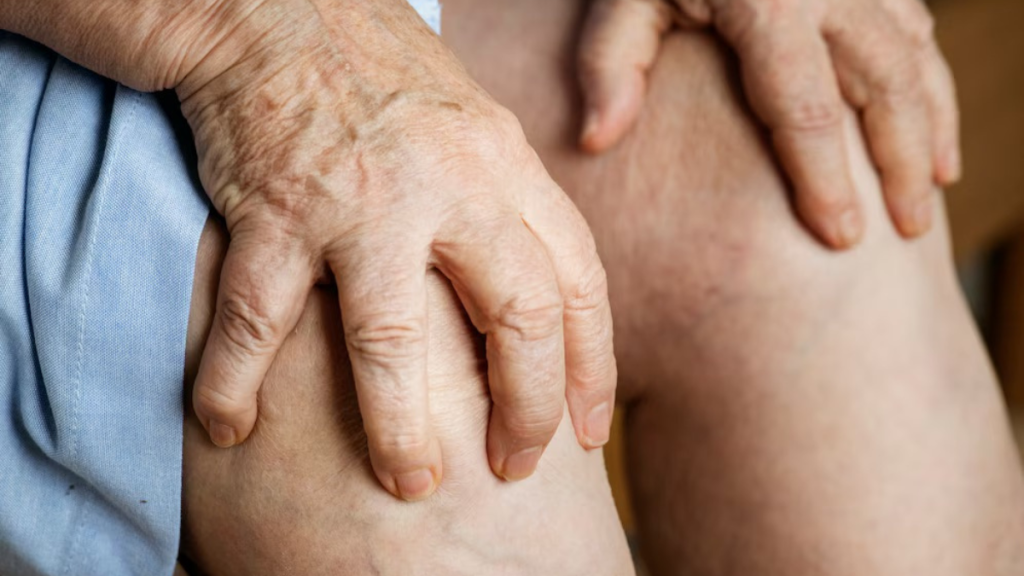Arthritis is a condition that affects millions of people around the world, causing pain, swelling, and stiffness in the joints. While it can impact individuals of all ages, the common case is when we age. In this guide, we’ll discuss the symptoms, causes, and treatments for arthritis, helping you to have an adequate knowledge of the condition better and how you can deal with it.
What is Arthritis?
Arthritis is pretty much when one or more of your joints become inflamed causing swelling, pain, and stiffness. It can occur in any part of your joints, whether it be your hips, knees, or hands. The most common types of arthritis includes:
- Osteoarthritis (OA): This is the most prevalent type of arthritis, and it’s primarily associated with the wear and tear of the cartilage that cushions our joints.
- Rheumatoid Arthritis (RA): This is a serious autoimmune condition that targets the tissues in your joints, leading to inflammation and, ultimately, damage to the joint itself.
Arthritis is a condition that can affect people at any stage of life, but it tends to become more common as we get older, especially when it comes to osteoarthritis.
Common Symptoms of Arthritis
The presence of arthritis can differ based on the type of arthritis and how serious the diagnosis is. Below are the most common symptoms of arthritis:
- Pain: Recurrent (or constant) pain in the joints that can be mild or sharp and is worsened with activity.
- Swelling: Inflammation can produce swelling in the joint that can be tender.
- Joint Stiffness: Sometimes you will not be able to move the joint easily; especially after sitting or lying down for some time (such as in the morning).
- Redness and Heat: The skin over the joint may be red, and warm to the touch.
- Fatigue: Fatigue may be greatest in inflammatory arthritis such as rheumatoid arthritis; fatigue can come with joint pain.
Causes of Arthritis
Arthritis may be caused by a number of conditions involving:
- Genetics: Your family history determines your likelihood of getting arthritis. If there is no history of arthritis in your family, the chances of getting it could be lower than if there is history of arthritis. After being diagnosed, people with a family history might have more worries that the disease could get worse or turn into multiple sub-types
- Age: The older you get, the more likely you are to develop arthritis and a rise in osteoarthritis is especially frequent as you age.
- Injury: If you have had a joint injury in the past, you may also be at risk of developing arthritis at the site of the injury/damage.
- Autoimmune: Rheumatoid arthritis makes the immune system turn against healthy tissue.
Effective Treatments for Arthritis
While there is no remedy for arthritis, a range of effective treatments can help manage symptoms and enhance quality of life
1. Over-the-Counter Medications
Pain relief is a consideration of particular importance to those with arthritis. Aleve vs Advil: Aleve (naproxen) and Advil (ibuprofen) are both NSAIDs (non-steroidal), but Aleve lasts longer and is only taken twice daily rather than more often like Advil. Selecting which one you ought to take will be based on your personal requirements, e.g., frequency of relief and the way your body responds to either drug
2. Prescription Medications
In situations of severe arthritis, prescription drugs are needed. Osteoarthritis medications: Along with taking NSAIDS, you can employ corticosteroids or disease-modifying drugs to ease pain and inflammation. For inflammatory forms of arthritis, like rheumatoid arthritis drugs are being used that are biologics that attack the cause of swelling. Topical NSAIDs, like MEDISTIK, are also effective alternatives to oral medications when applied directly to the area of pain.
3. Physical Therapy
Seeing a physiotherapist can help with managing arthritis. Physiotherapy is useful for a variety of reasons. It can help strengthen the muscles around the joint affected by arthritis, help increase range of joint motion, and relieve pain associated with arthritis. Your physiotherapist can develop an individualized exercise program that addresses your needs to improve your mobility while decreasing the chance of more joint damage.
4. Changes in Lifestyle
In addition to therapy and medication, lifestyle alterations can significantly affect reducing arthritis. Achieving and maintaining a healthy weight will help lessen the amount of strain placed on weight-bearing joints, and engaging in regular physical activity is a great way to keep your joints more mobile and flexible. Increasing the amount of anti-inflammatory foods you eat, such as omega-3 fatty acids found in fish, could also reduce inflammation and pain.
When to See a Doctor
If you see an increase to your arthritic symptoms, or notice a change in the shape of your joints, you should see your doctor. The earlier you make an appointment, the better. Effective management of arthritis is important to prevent joint damage and to manage arthritis in the long term. Otherwise, if you are finding that you are increasingly unable to do things in your daily life from stiffness or pain, your primary care provider can help to recommend a treatment plan that might work for you.
Conclusion
While arthritis can be a chronic condition, people can live full and meaningful lives when treated properly. Patients can help manage their arthritis with medications, physical therapy and some lifestyle changes. If you are suffering with swollen or stiff joints, it is important not to delay getting a consultation and start developing a treatment plan. With the proper management, you can minimize the impact arthritis has on your life.




